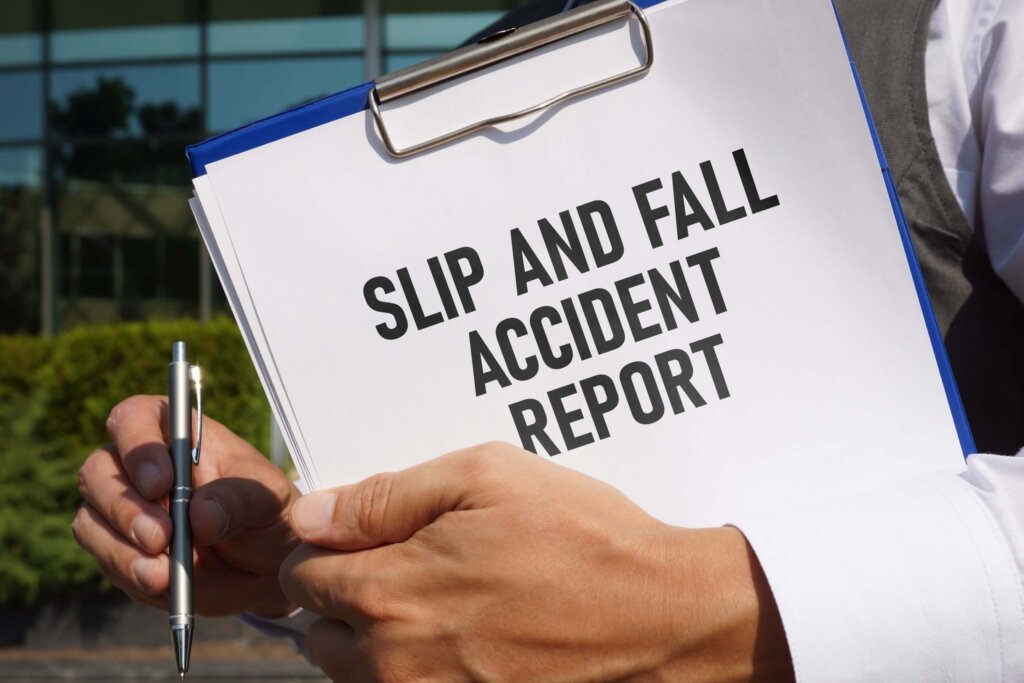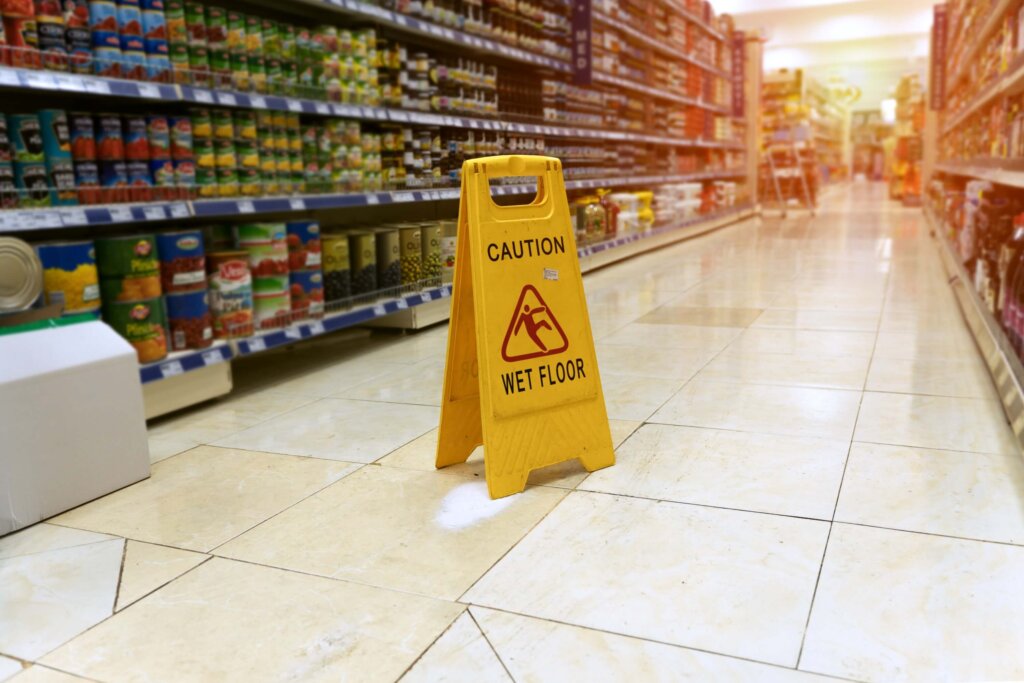Slips, trips, and falls may seem interchangeable, but they differ in cause and outcome. A slip typically occurs when there is too little traction on a surface, causing feet to slide involuntarily, while a trip results from encountering an obstacle, disrupting movement. Both can lead to a fall, defined as the sudden loss of balance resulting in contact with the ground or a lower level.
Understanding these distinctions aids in implementing effective safety measures. Businesses and individuals can reduce risks through proper footwear, regular housekeeping, and immediate cleanup of spills. Awareness of these simple precautions can significantly enhance safety in both public and private spaces.
While each incident type presents unique challenges, recognizing their differences is key. By identifying slip and trip hazards, and understanding how they lead to falls, communities and workplaces can better safeguard against potential injuries.

Slip vs Trip vs Fall: Definitions and Key Differences
Slip, trip, and fall incidents are common causes of injury. Each type involves unique mechanisms and environmental factors. Understanding these differences can help in prevention and safety awareness.
Understanding Slip Incidents
Slip incidents occur when there is not enough traction between the foot and the floor surface. This often results from the presence of wet or oily surfaces. Ice, snow, and loose rugs can also contribute to slips. Key causes include inadequate footwear and lack of attention to the walking surface.
Common locations for slips include kitchens, bathrooms, and slippery walkways. Safety measures include using anti-slip mats and appropriate shoes. Recognizing these factors can reduce the risk of slip-related injuries.
Identifying Trip Occurrences
Trip incidents happen when one’s foot strikes an object, causing an individual to lose balance. This can be due to clutter, uneven surfaces, or loose carpeting. Proper lighting and clear walkways are crucial in preventing trips.
Objects like cords, thresholds, and rugs often play a role. Preventive measures include keeping floors clear and ensuring good visibility. Addressing potential hazards can minimize the risk of tripping incidents.
Fall Accidents Explained
Fall accidents involve a sudden descent brought on by a slip or trip. Falls can lead to serious injuries such as fractures. Factors contributing to falls include age, physical condition, and environmental hazards.
Maintaining balance becomes difficult when faced with slippery surfaces or obstacles. Strategies like using handrails and installing grab bars in key areas can enhance safety. Recognizing the difference between slips and falls is crucial for effective prevention.
Preventing Slip and Fall Accidents
Slips, trips, and falls can lead to various health impacts, including minor injuries and severe complications. Implementing effective safety measures can significantly reduce these incidents.
Impact on Human Health
Slips, trips, and falls are common sources of injury, especially among elderly individuals. They can result in bruises, sprains, fractures, and more severe head injuries. Hip fractures are a significant risk, particularly in older adults, often leading to prolonged recovery and loss of independence. In some cases, injuries can cause long-term pain and disability. Mental health effects, such as increased anxiety about falling again, can also occur, impacting overall well-being.
Slip, Trip, and Fall Safety Measures
To prevent slip and fall accidents, several strategies can be employed. Maintaining clean, clutter-free walkways and using non-slip mats or rugs are effective methods. Ensuring adequate lighting in both indoor and outdoor areas can help individuals see and avoid potential hazards. Installing handrails and grab bars, especially in high-risk areas like bathrooms and staircases, provides extra support. Regular inspection and maintenance of flooring and stairs are crucial in identifying and repairing potential dangers. Additionally, encouraging the use of appropriate footwear can further minimize risks.

Safety Assessments and Legal Considerations
Safety assessments play a vital role in reducing incidents of slips, trips, and falls. Understanding their legal implications is crucial for businesses and property owners to avoid liabilities.
Role of Safety Testing
Safety testing ensures environments are evaluated for potential hazards. Regular assessments can identify risks like uneven flooring, inadequate lighting, and cluttered walkways. These evaluations may involve tools such as slip meters to measure floor traction and lighting meters for checking visibility levels.
Conducting periodic safety audits helps maintain standards. By doing so, companies can diminish risks and enhance workplace safety. Documentation from these tests can serve as valuable evidence in case of legal challenges or insurance claims, demonstrating due diligence in maintaining a safe environment.
Legal Implications and Responsibilities
Legal responsibilities surrounding slip, trip, and fall accidents are significant for property owners and businesses. They must ensure premises are safe and free from hazards. Failure to meet these requirements can result in lawsuits, leading to financial and reputational damage.
Employers and owners are generally expected to comply with health and safety regulations. This typically involves regular risk assessments and taking corrective measures where necessary. Understanding legal duties helps prevent negligence claims, while thorough documentation of safety efforts can be pivotal in defense if a claim arises.
Clear signage and prompt repairs of known hazards are often part of standard legal protocols. Stakeholders should remain updated on local laws and industry guidelines to prevent liabilities.
Contact a Slip, Trip, and Fall Lawyer
If you’ve experienced a slip, trip, or fall, it’s essential to understand your rights and options for seeking compensation. Contacting an experienced attorney like Larry Moskowitz can make all the difference in your personal injury claim.
Larry Moskowitz has a proven track record of helping clients navigate the complexities of personal injury law, ensuring they receive the justice and compensation they deserve. With his expertise, you’ll gain a comprehensive understanding of your case, from gathering evidence to negotiating with insurance companies.
Don’t let the aftermath of an accident overwhelm you; reach out to Larry Moskowitz for a consultation. He will provide personalized advice tailored to your situation, guiding you through each step of the legal process with dedication and care. Protect your rights and secure the best possible outcome by contacting Larry Moskowitz today.